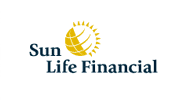





























A Deferred Profit Sharing Plan (DPSP) is an arrangement similar to a Defined Contribution Pension Plan (DCPP) whereby an employer distributes a portion of pre-tax profits to selected employees. The pension amount is not known in advance and is determined by the amount of contributions, investment returns and annuity and interest rates at the plan member's retirement. In contrast to a DCPP, plan members cannot make contributions and the employer's contribution is dependent on company profits. Employers may contribute an amount no greater than 9% of the employee's earnings for the current calendar year to the maximum contribution limit (half of the Registered Pension Plan maximum). The employer's contributions are a tax deductible expense and are not a taxable benefit to the plan member.
The investment choices are basically the same as for a Defined Contribution Pension Plan and typically include:
At retirement, the plan member has the option of purchasing a life annuity or a Registered Retirement Income Fund (RRIF). The life annuity can be purchased with a guarantee period (e.g. payments for the life of the plan member with payments guaranteed for a minimum of 15 years) or on a joint and last survivor basis which provides benefits for both the life of the plan member and his or her spouse. In the later case, the payments can be set to continue at the same level after the plan member's death or they can be reduced after the death. If a joint and last survivor option is not chosen, both the plan member and spouse must sign a "Spouse's Waiver of Rights Under a Pension Plan" form.
A RRIF has some advantages over a life annuity. In particular, it allows for more flexible payment schedules and control over investment choices. The income received each year is taxable, while the balance remains tax-sheltered. Revenue Canada has established the minimum income level that must be received each year based on a percentage of RRIF assets. Other than this minimum requirement, the level of income is completely flexible. In contrast to a LIF/LRIF, there is no maximum income and the plan can continue beyond age 80.
Advantages of a Deferred Profit Sharing Plan:
Disadvantages of a Deferred Profit Sharing Plan: